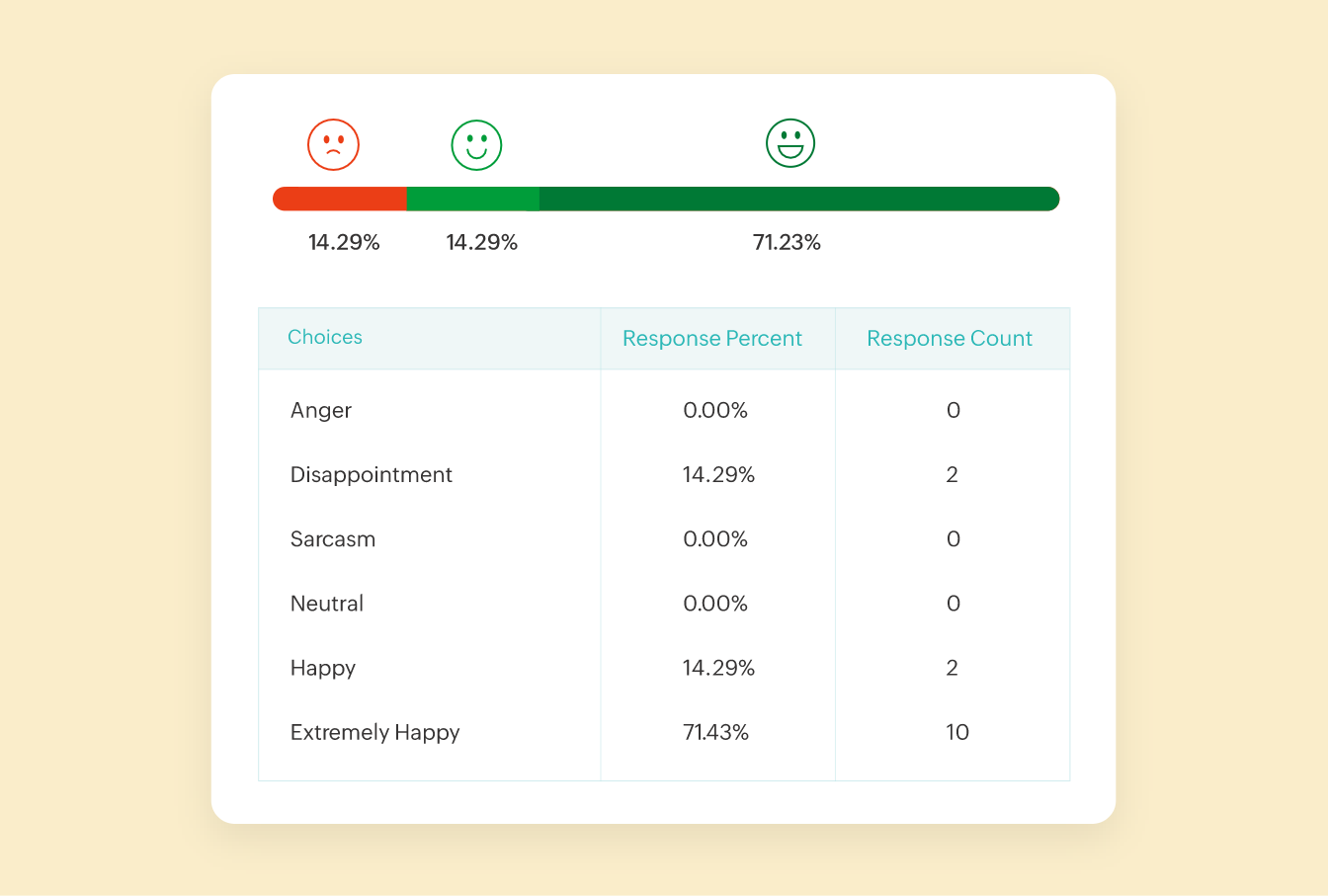- Harnessing rich data in the digital age
- Zoho Survey’s role in focus group phases
- Recruitment
- Focus group discussions
- Analyzing reports
- To summarize
Harnessing rich data in the digital age
Many popular brands have turned to focus group research at various stages of their journeys. Starbucks initiated open forums to learn about customers’ in-store experiences. Meanwhile, LEGO used focus groups to rejuvenate the brand and reconnect with its audience. Just imagine the amount of feedback they received!
Tools like sentiment analysis and word clouds would have been invaluable in dissecting that vast qualitative data, helping researchers pinpoint key themes and sentiments without getting overwhelmed. This is where modern survey platforms shine. They are ideal for handling rich and comprehensive qualitative data.
Zoho Survey’s role in focus group phases
While focus groups and surveys are often viewed as separate research methodologies, they can, in fact, work in tandem for enriched outcomes. Combining the depth of focus groups with the broad reach of surveys helps you get a more holistic understanding of your audience’s perspective.
1. Recruitment
Creating pre-screening questionnaires will ensure that your focus group participants truly represent your target audience. Demographic, location, and other quotas help you maintain diversity within your audience. They also help you avoid oversampling of certain groups. Pre-screening surveys can be embedded in your website or distributed through email or SMS.
2. Focus group discussions
Guided discussions: While focus group discussions are often open-ended to encourage natural conversations, there might be specific topics or questions you want to cover. Creating a structured set of questions will help you guide the discussion.
Real-time feedback: You can utilize Zoho Survey to collect real-time feedback. For instance, after discussing a certain topic, you can ask participants to immediately provide their feedback. This ensures that reactions are captured when they’re fresh and potentially unbiased, rather than based on participants’ memories or influenced by the discussion.
Interactive polls: Quickly gauge the group’s consensus on a topic by running instant polls. You can add scores to the poll questions. This not only helps you see where the majority opinion lies, but can also stimulate further discussion based on the poll results.
Multimedia inclusion: If you have any videos, images, or audio clips to share during the discussion, you can embed them directly into the survey. This can be particularly useful if you want participants to react to an advertisement, a product design, or any other visual.
3. Analyzing reports
Sentiment analysis: When processing open-ended responses or feedback from your focus groups, sentiment analysis automatically gauges the emotional tone behind the text. Instead of merely understanding what is said, you also get insights into how participants feel about a particular topic or product.

Word cloud: Word clouds visually represent the frequency of words or phrases in your qualitative data. At a glance, you can identify common themes, concerns, or highlights.

Cross-tabbing: If you’ve collected both qualitative and quantitative data, Zoho Survey’s cross-tabulation tool can help you correlate the insights. This tool allows you to compare responses across different segments to identify patterns or trends. For instance, you could determine whether a particular demographic feels more strongly about a topic, deepening your qualitative analysis.

To summarize
In the fast-paced world of research, it’s essential to adapt and find creative ways to make the most of the tools at your disposal. While Zoho Survey may have its roots in quantitative research, its extensive features make it a versatile ally in your qualitative research and focus group efforts. Features like flexible question types, sentiment analysis, and word clouds can help you explore human emotions and perceptions that often remain hidden by numbers alone. Features like audio recording and speech-to-text options will soon be added to Zoho Survey, making it an even more potent tool for qualitative research. From discussions to decisions, Zoho Survey simplifies every step!
